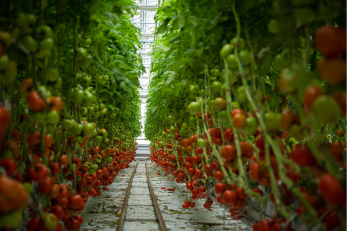

04/08/2016
 |
| Montreal’s Lufa Farms grows red cocktail tomatoes and lots of other crops on vertical walls |
David Rosenberg, chief executive and co-founder of AeroFarms said: “On average, we’re growing in 16 days what otherwise takes 30 days in a field, using 95% less water, about 50% less fertilizers, zero pesticides, herbicides and fungicides”.
There are some successful models of vertical farms. One is Aerofarms as known as the world’s largest indoor vertical farm with the $30 million, 69,000 square-foot complex in a former steel mill in Newark, New Jersey’s Ironbound District and two million pounds of kale, arugula and other greens annually grown up.
The second is Vertical Harvest with 13,500 square-foot vertical farm also now under construction in Jackson Hole, Wyoming. With an average annual snowfall of 450 inches, one might not equate the mountainous region with year-round local food, but Vertical Harvest’s tiny 1/10 acre lot next to a parking garage aims to grow up to 100,000 pounds of tomatoes, herbs and greens annually. It would take a traditional outdoor farm 5 acres, or 50 times the land area, to grow that much food that enough to replace food grown and shipped in Mexico or California. Everybody’s so much more aware of the need to reduce transportation, and people like to know their farmer and where food’s coming from.”
The third is FarmedHere opening its vertical farm in an abandoned warehouse in the industrial Chicago suburb of Bedford Park in 2013. It was the first of its kind to receive USDA national organic certification, has been successfully distributing its produce to an extensive array of grocers within the Greater Chicago area, including Whole Foods, Mariano’s, Shop & Save and Pete’s Fresh Market. FarmedHere reuses 97% of its water, uses no herbicides or pesticides, and takes advantage of indoor growing technology to create optimal-tasting plants.
The plants in these vertical farms are evaluated to have better nutrients, better growing conditions, and actually can be tweaked the taste with lighting and with nutrients, with temperatures, with turning lights on and off at certain times of the day and with humidity■
Lưu Trang